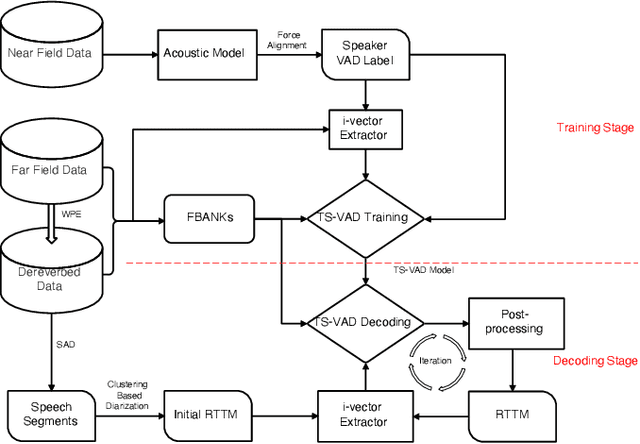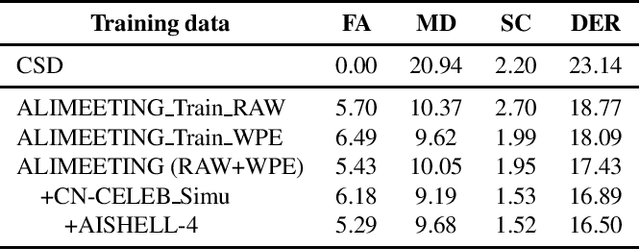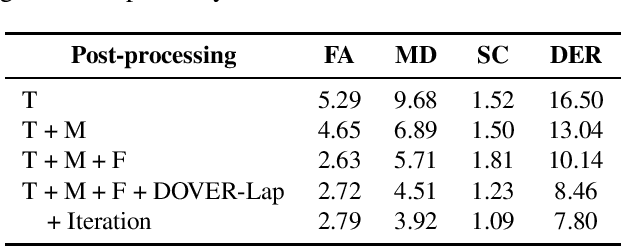Weilin Zhou
The USTC-Ximalaya system for the ICASSP 2022 multi-channel multi-party meeting transcription challenge
Feb 10, 2022



Abstract:We propose two improvements to target-speaker voice activity detection (TS-VAD), the core component in our proposed speaker diarization system that was submitted to the 2022 Multi-Channel Multi-Party Meeting Transcription (M2MeT) challenge. These techniques are designed to handle multi-speaker conversations in real-world meeting scenarios with high speaker-overlap ratios and under heavy reverberant and noisy condition. First, for data preparation and augmentation in training TS-VAD models, speech data containing both real meetings and simulated indoor conversations are used. Second, in refining results obtained after TS-VAD based decoding, we perform a series of post-processing steps to improve the VAD results needed to reduce diarization error rates (DERs). Tested on the ALIMEETING corpus, the newly released Mandarin meeting dataset used in M2MeT, we demonstrate that our proposed system can decrease the DER by up to 66.55/60.59% relatively when compared with classical clustering based diarization on the Eval/Test set.
Adaptive Bayesian Linear Regression for Automated Machine Learning
Apr 18, 2019


Abstract:To solve a machine learning problem, one typically needs to perform data preprocessing, modeling, and hyperparameter tuning, which is known as model selection and hyperparameter optimization.The goal of automated machine learning (AutoML) is to design methods that can automatically perform model selection and hyperparameter optimization without human interventions for a given dataset. In this paper, we propose a meta-learning method that can search for a high-performance machine learning pipeline from the predefined set of candidate pipelines for supervised classification datasets in an efficient way by leveraging meta-data collected from previous experiments. More specifically, our method combines an adaptive Bayesian regression model with a neural network basis function and the acquisition function from Bayesian optimization. The adaptive Bayesian regression model is able to capture knowledge from previous meta-data and thus make predictions of the performances of machine learning pipelines on a new dataset. The acquisition function is then used to guide the search of possible pipelines based on the predictions.The experiments demonstrate that our approach can quickly identify high-performance pipelines for a range of test datasets and outperforms the baseline methods.
 Add to Chrome
Add to Chrome Add to Firefox
Add to Firefox Add to Edge
Add to Edge